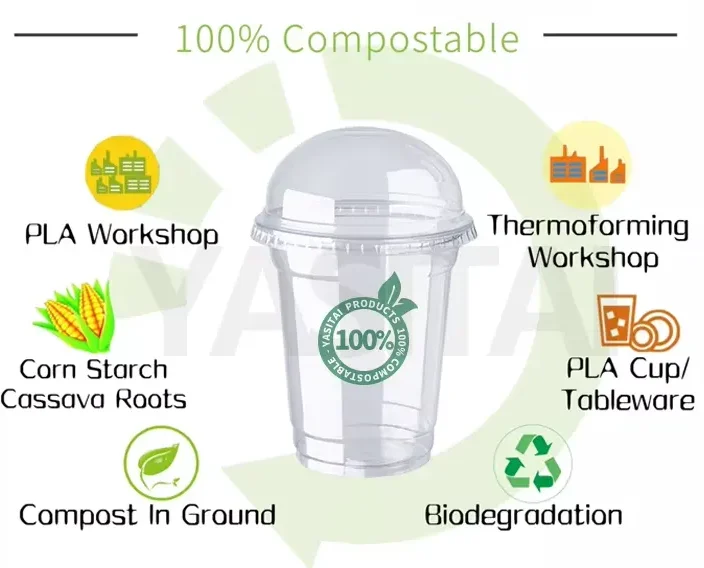Как биоразградимите чаши революционизират индустрията
В епоха, дефинирана от екологичното съзнание и устойчивост, the packaging industry is undergoing a transformative shift towards more eco-friendly practices. With mounting concerns over plastic pollution, изчерпване на ресурсите, and climate change, businesses and consumers alike are increasingly prioritizing sustainable packaging solutions that minimize environmental impact and promote a more circular economy.
Sustainable packaging encompasses a wide range of practices and materials aimed at reducing waste, запазване на ресурсите, and mitigating environmental harm. From utilizing renewable and biodegradable materials to optimizing packaging design for reduced material usage, sustainable packaging solutions offer a holistic approach to addressing environmental challenges.
One of the key principles driving the adoption of sustainable packaging is the concept of the circular economy. Rather than following a linear ¡°take-make-dispose¡± model, the circular economy aims to close the loop on resource usage by designing products and packaging for reuse, рециклиране, and regeneration. This shift towards a circular economy requires collaboration and innovation across the entire packaging value chain, from raw material sourcing to end-of-life disposal.
Biodegradable materials, such as PLA (полимлечна киселина) and compostable plastics, are gaining popularity as sustainable alternatives to traditional plastics. Derived from renewable resources such as corn starch or sugarcane, biodegradable materials break down naturally in the environment, reducing the accumulation of plastic waste in landfills and oceans.
Recyclable materials, such as paper, cardboard, and glass, are also widely used in sustainable packaging. These materials can be recycled multiple times without losing their integrity, conserving valuable resources and reducing the need for virgin materials.
Освен това, innovative packaging designs, such as lightweighting, source reduction, and packaging optimization, are helping to minimize material usage and maximize efficiency. By designing packaging that is both functional and resource-efficient, businesses can reduce their environmental footprint while meeting consumer demand for sustainable products.
Въпреки това, embracing sustainable packaging is not without its challenges. Transitioning to alternative materials and packaging designs may require investment in new technology, retooling of manufacturing processes, and collaboration with suppliers and stakeholders. Допълнително, consumer education and awareness are essential to drive demand for sustainable products and encourage behavior change.
Despite these challenges, the benefits of embracing sustainable packaging far outweigh the costs. Businesses that prioritize sustainability can enhance their brand reputation, attract environmentally conscious consumers, and contribute to a healthier planet. By embracing sustainable packaging practices, we can build a greener future for generations to come, where packaging serves as a catalyst for positive environmental change rather than a source of pollution and waste.
В заключение, the transition to sustainable packaging is essential for building a more sustainable and resilient future. By adopting eco-friendly materials, embracing circular economy principles, and innovating packaging design, businesses can reduce their environmental impact and contribute to a more sustainable world. Together, we can embrace sustainable packaging as a cornerstone of a greener future.
